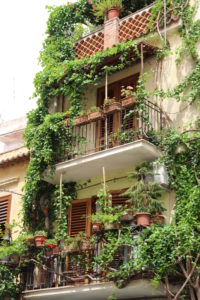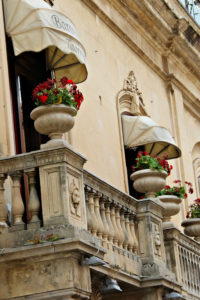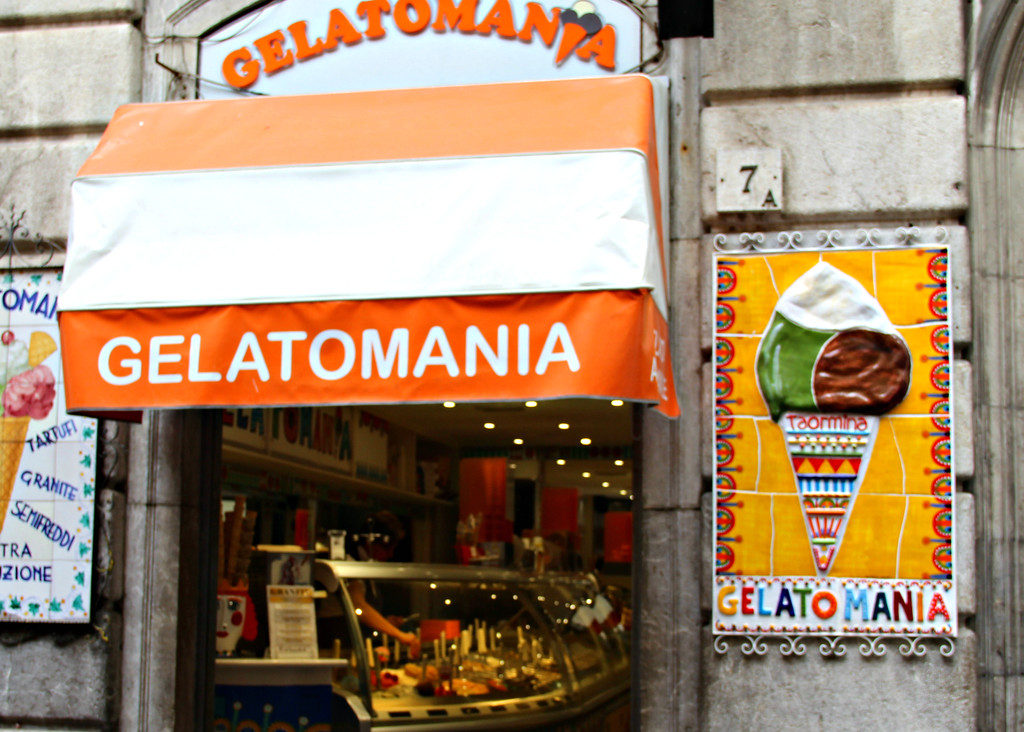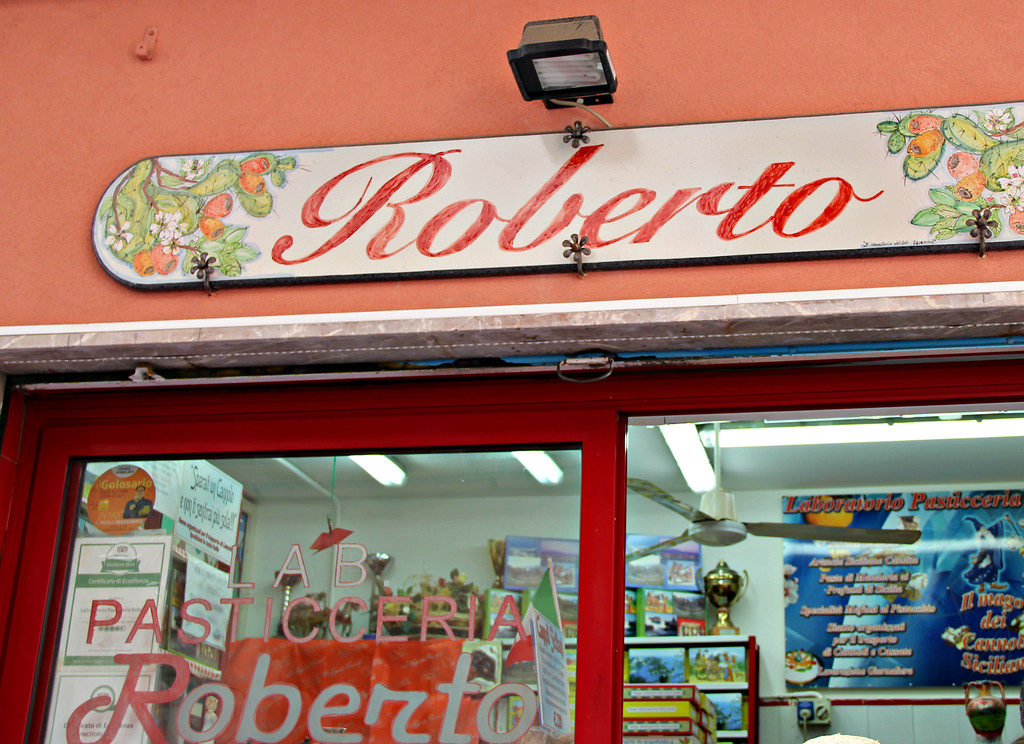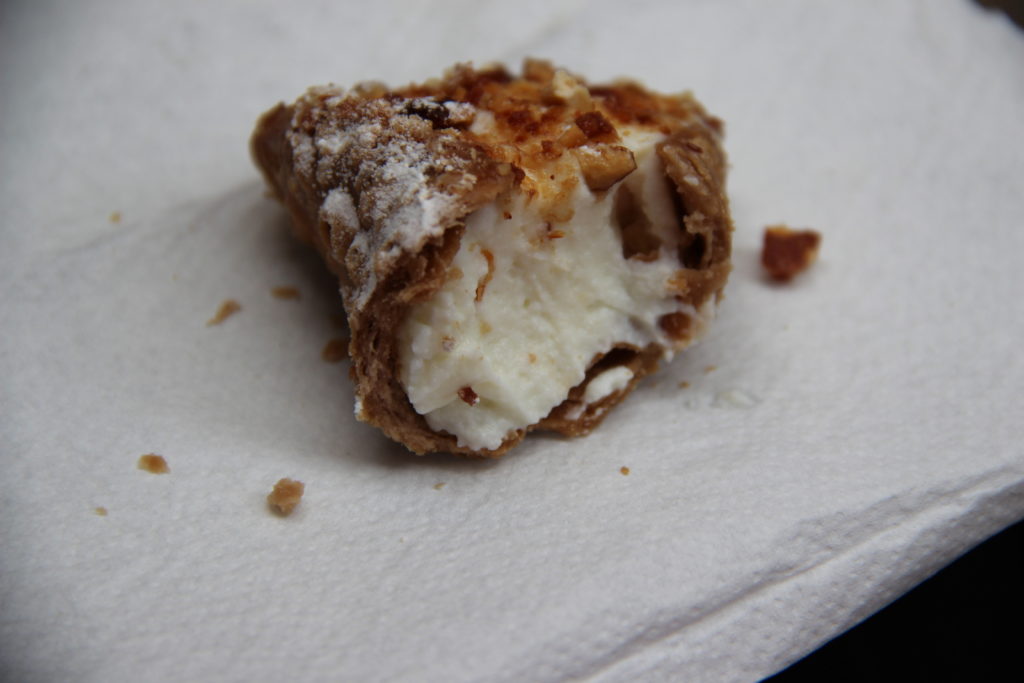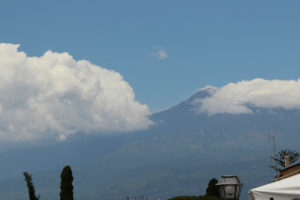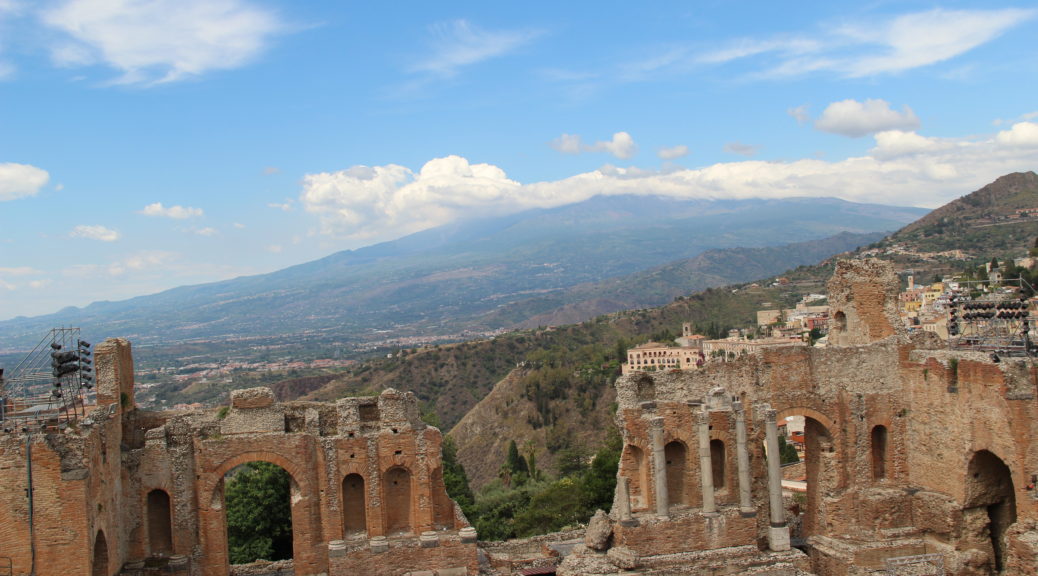
Taormina
Our next port of call was Taormina, Sicily. Taormina was founded by the Greeks in 358 BC but 300 years later it was under Roman rule. It is on the eastern coast of Sicily on the Ionian Sea and close to Mt. Etna. Part of our trip to Taormina took us through the Strait of Messina, lying between Sicily and mainland Italy. This was the first night where we experienced some “rocking and rolling” aboard the ship – but it wasn’t too bad. The next morning I took these pictures from our ship as we approached the port of Taormina – including a beautiful rainbow!

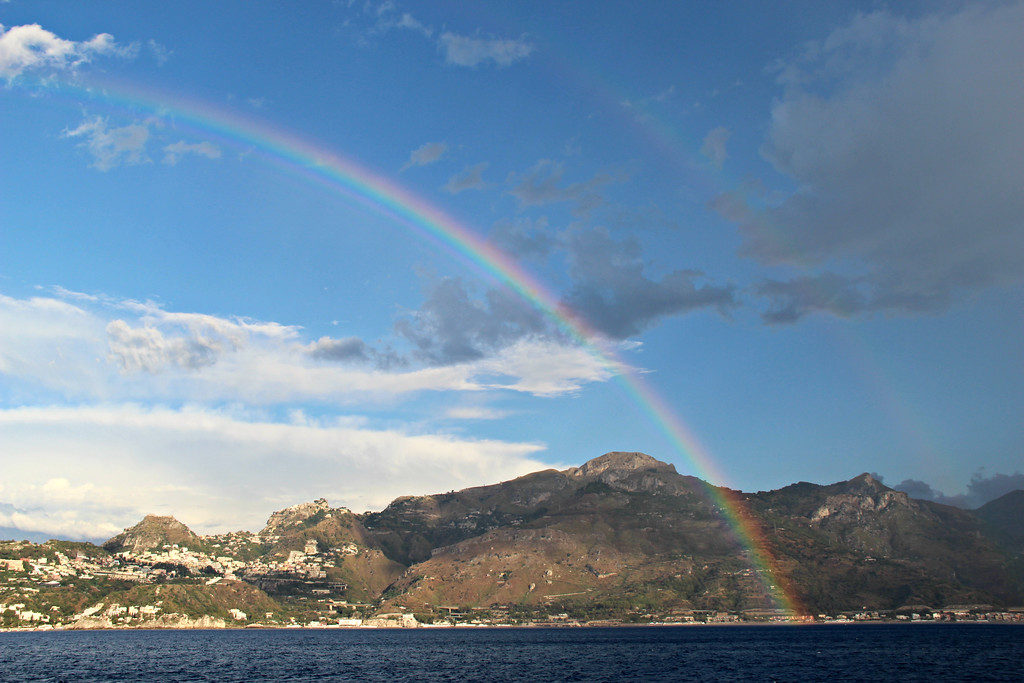


We entered the city of Taormina through one of the city’s gates, the Porta Messina. It was part of Taormina’s fortification wall and was rebuilt in 1808. We then walked with our guide to the Palazzo Corvaja, a medieval palace. Its construction began in the 10th Century and was added on to through the 15th Century. After the picture of the city gate are two pictures of the palace. The first was taken in the courtyard. There is a stairway that leads to the entrance – it was added in the 13th Century. The landing has sculpted scenes from creation.
We went inside the Visitors’ Center where there was a display of marionettes (the final two pictures in this section). Puppet opera or puppet theater dates back to the early 1800’s and was popular in southern Italy and Sicily. Sicilian Puppet Theater was named to UNESCO’s Masterpieces of the Oral and Intangible Heritage of Humanity in 2001. UNESCO defines intangible heritage as the “ensemble of cultural and social expressions that characterize communities and are based on tradition. These intangible forms of heritage, passed from generation to generation, are modified through time by a process of collective re-creation.” Just as fables convey a moral lesson, themes such as honor, chivalry, and justice are told through puppet theater. The puppets are made of wood and are moved with rods and string. Many are clothed in real armor.
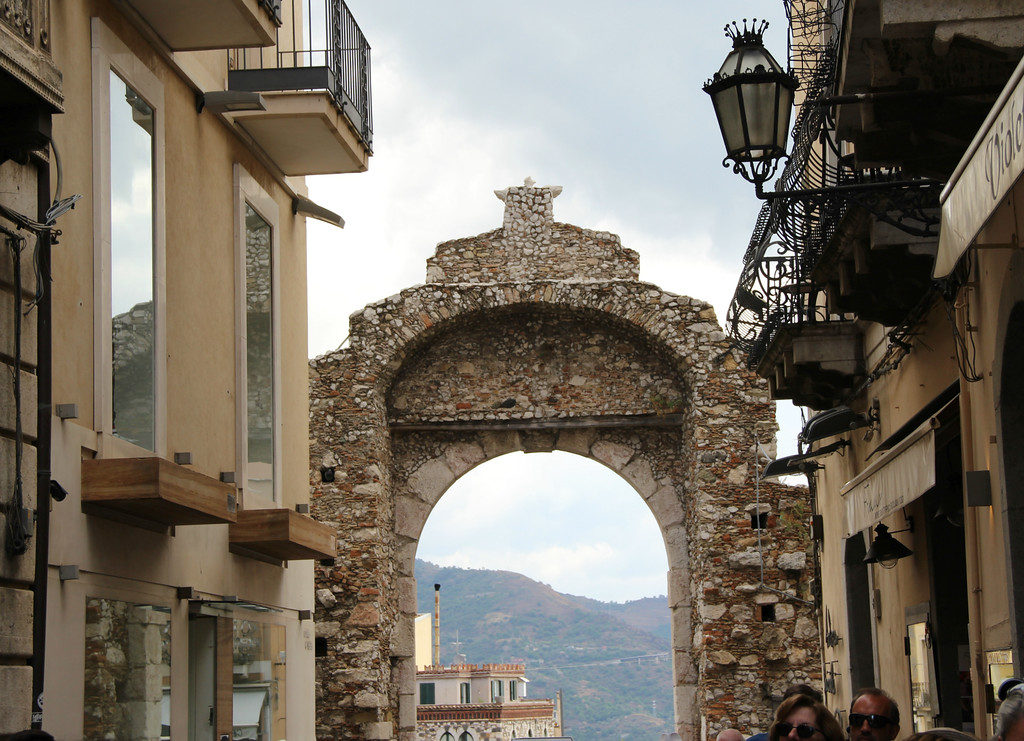

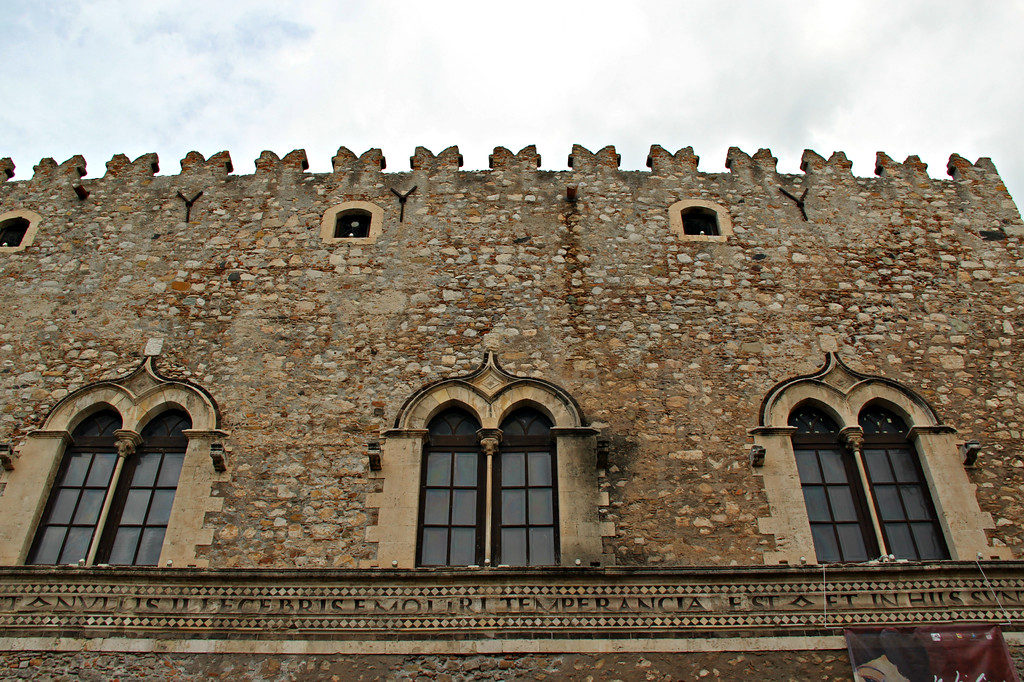
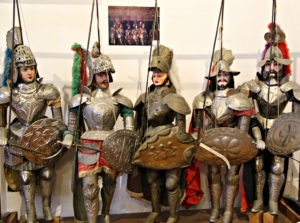
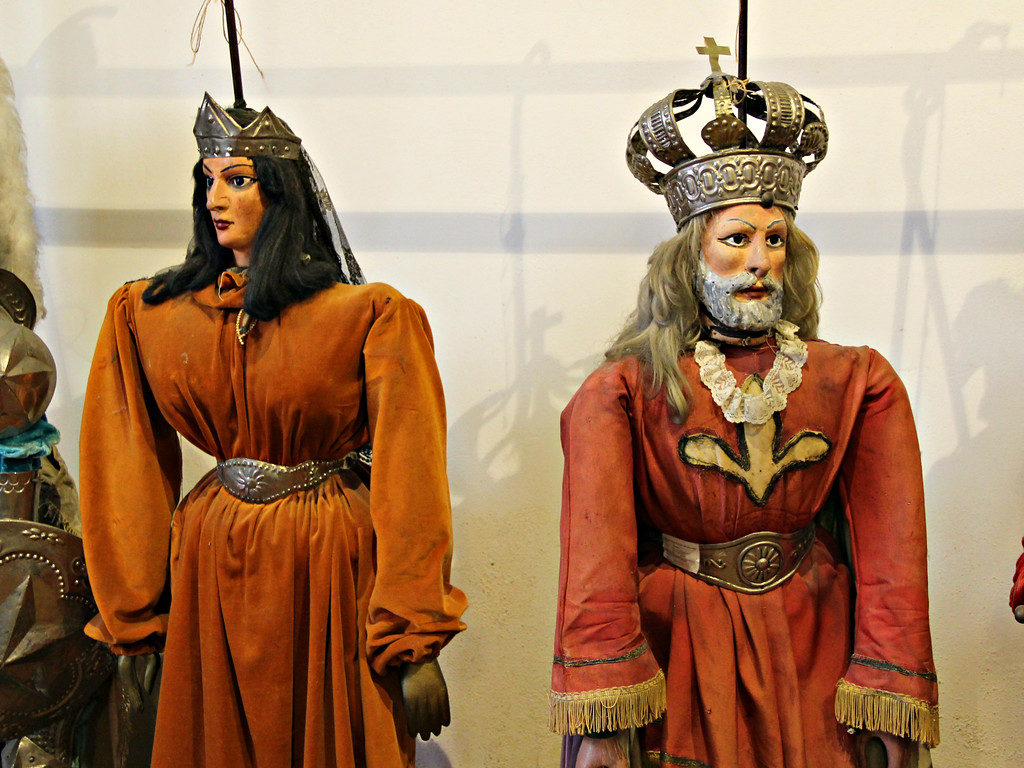
We also saw several churches as we walked around the town. The first picture is of the Church of Santa Caterina, or Church of St. Catherine of Alexandria. It was built in the 1600’s on the grounds of an ancient Greek temple. The facade is made of Taormina marble and the windows of Syracuse stone. There is a statue of St. Catherine above the entrance which was sculpted in 1705. The church was closed for 40 years for renovation and reopened in 1977. It is a small but pretty church. I have included a picture of the altar.
The third picture is of the Church of San Giuseppe and is dedicated to St. Joseph. It was built in the late 1600’s and early 1700’s. Like the Church of Santa Caterina, its facade is made of Taormina marble. It is located in the Piazza IX Aprile next to the clock tower. The clock tower is also pictured and was part of the fortification wall mentioned above. The clock was an addition during renovations in 1649.

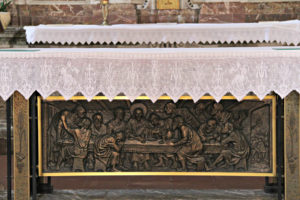
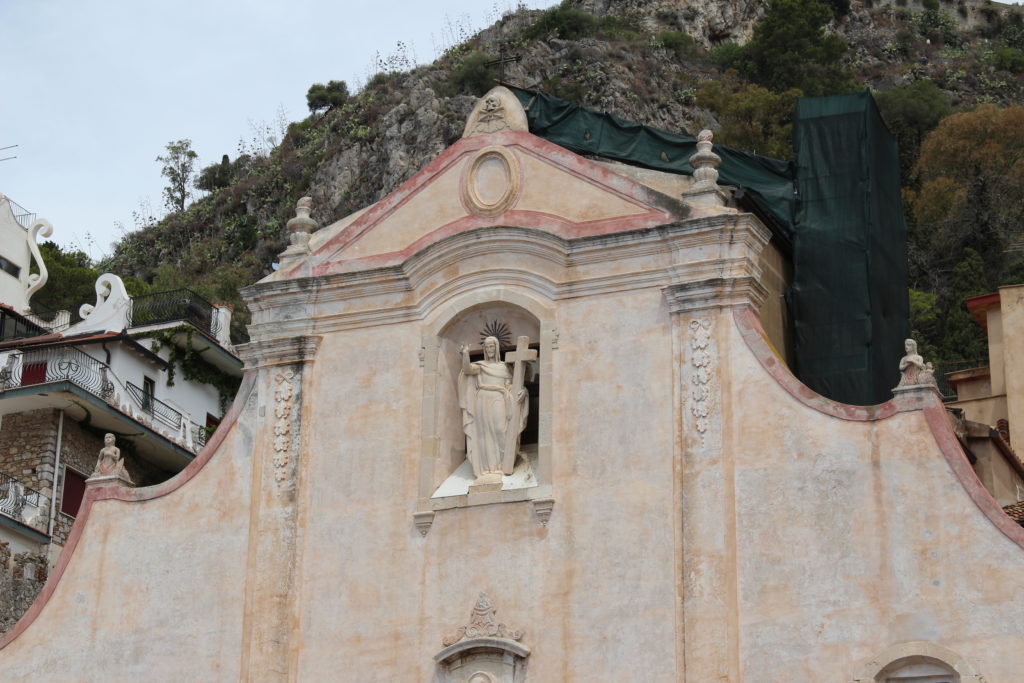
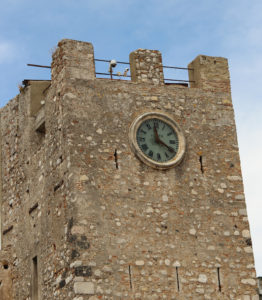
The highlight of Taormina is the Teatro Greco or Greek Theater. It is thought that the amphitheater was built by the Greeks around the third century BC. Incredibly, over 100,000 cubic meters of rock had to be removed from Mount Tauro in order for it to be built (this equates to about 3 1/2 million cubic feet). While the overall layout of the theater aligns to what the Greeks would have built, the bricks suggest that the Romans rebuilt part of the structure over the original foundation. The first two pictures below show the entrance to the theater complex. This is followed by two pictures of slides depicting the original design of the amphitheater as it would have looked in ancient times. An original seat was also on display in this area.
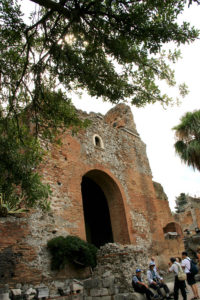
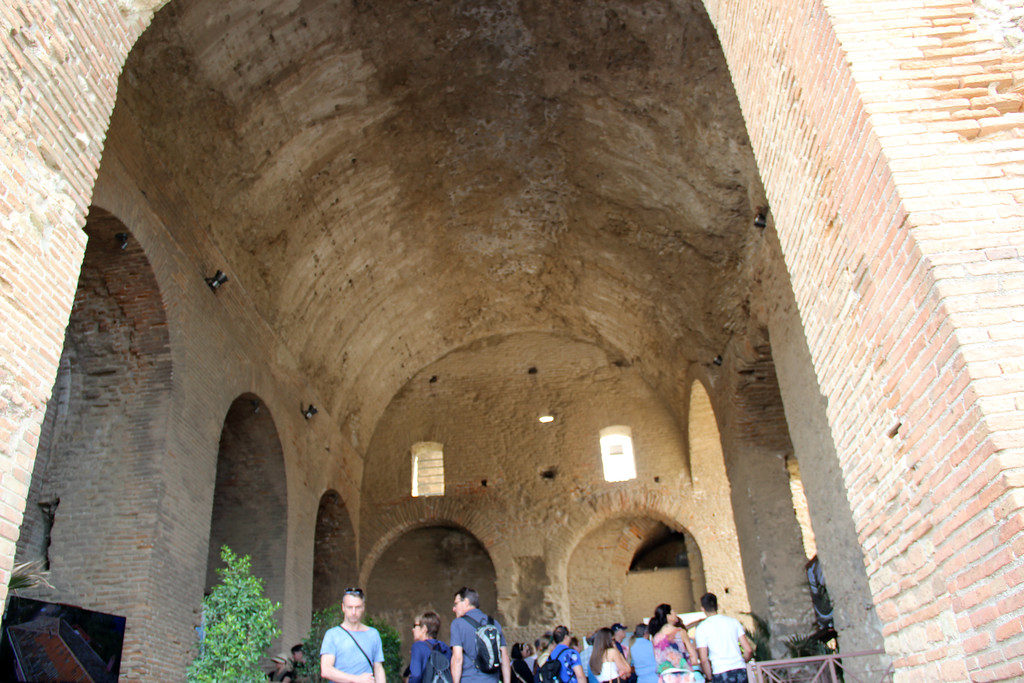

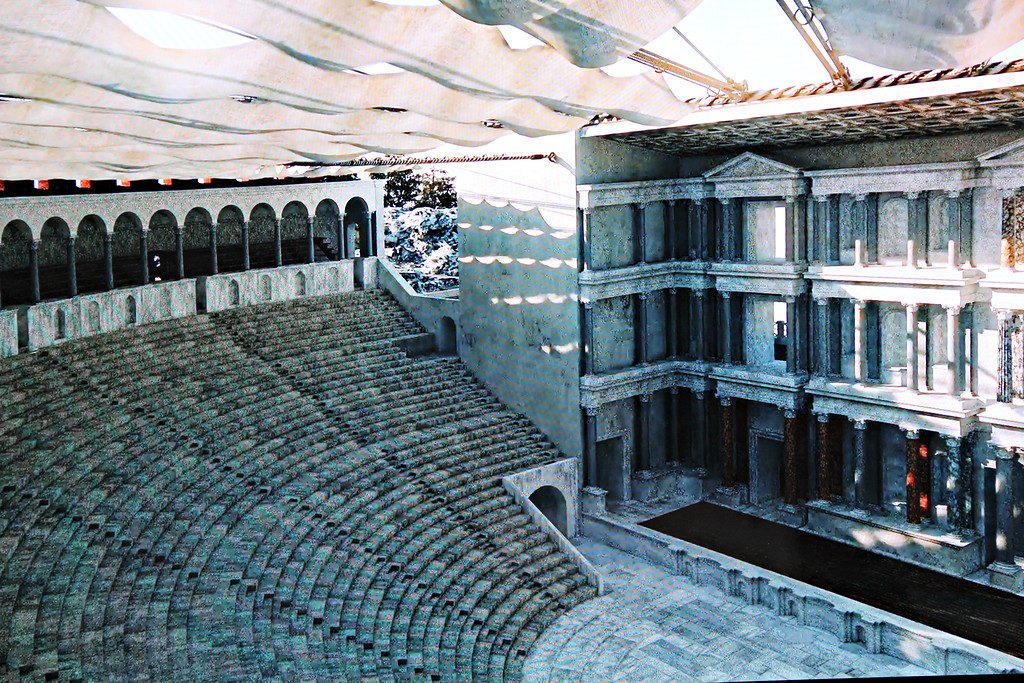
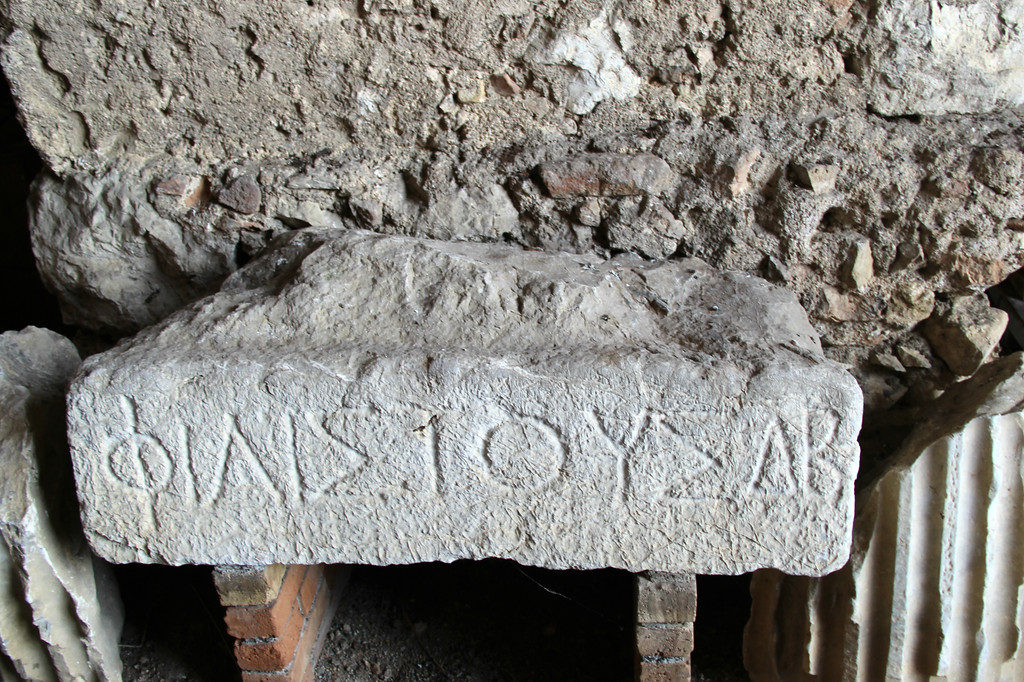
The Greeks probably used the theater for plays. When the Romans rebuilt the theater, estimated to be in the 2nd Century AD, it was likely used for gladiator contests and sporting events. The Romans added bricks, columns and statues as well as a roof which no longer exists. The Greeks had an orchestra pit but the Romans did away with it during the rebuilding. You can see the remains of the wall behind the scena (the stage) and entrances to the scena in the pictures below. It is unusual that so much of this wall remains. The first picture will give you a sense of the wall and the entrances while the other pictures in this section are close-ups of different parts of the wall and columns. You will also see a modern-day stage which is still used today for musical performances.

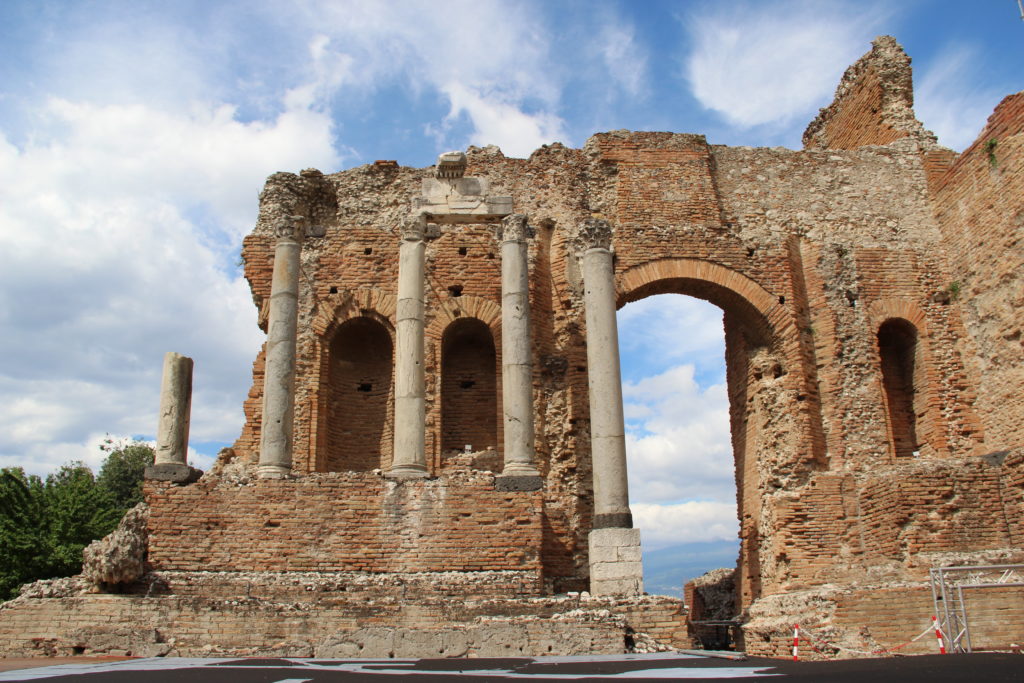
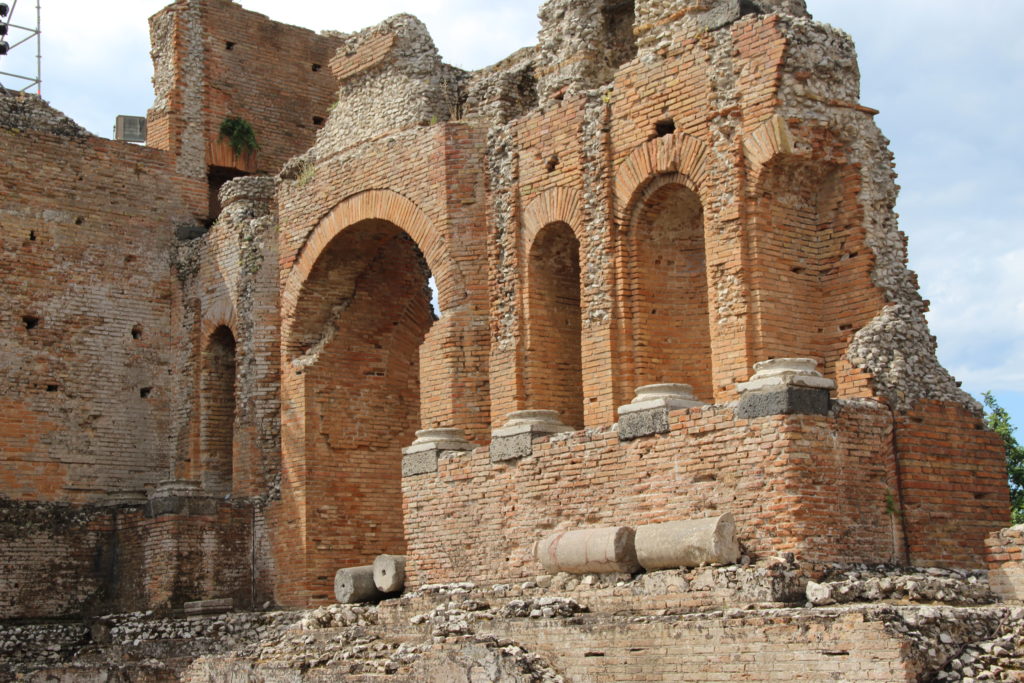

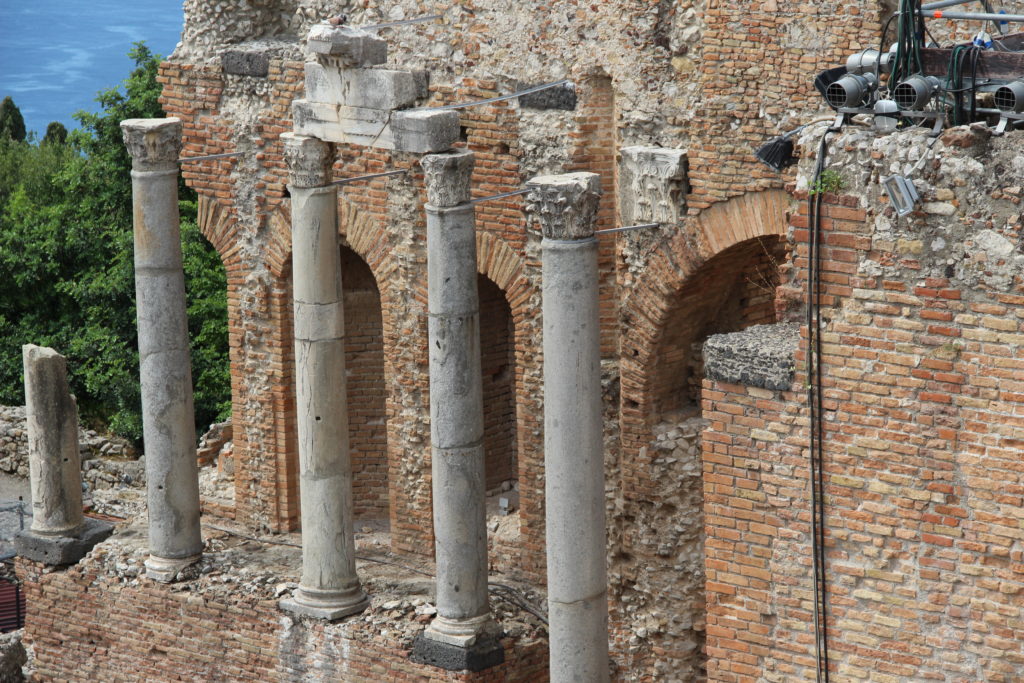
The first picture below shows the seating area, also called the cavea. It originally seated 5,000 people. The wall behind the auditorium is original while the seats have been replaced. We climbed to the top of this area. The other pictures in this section are from the top looking down toward the wall behind the scena.
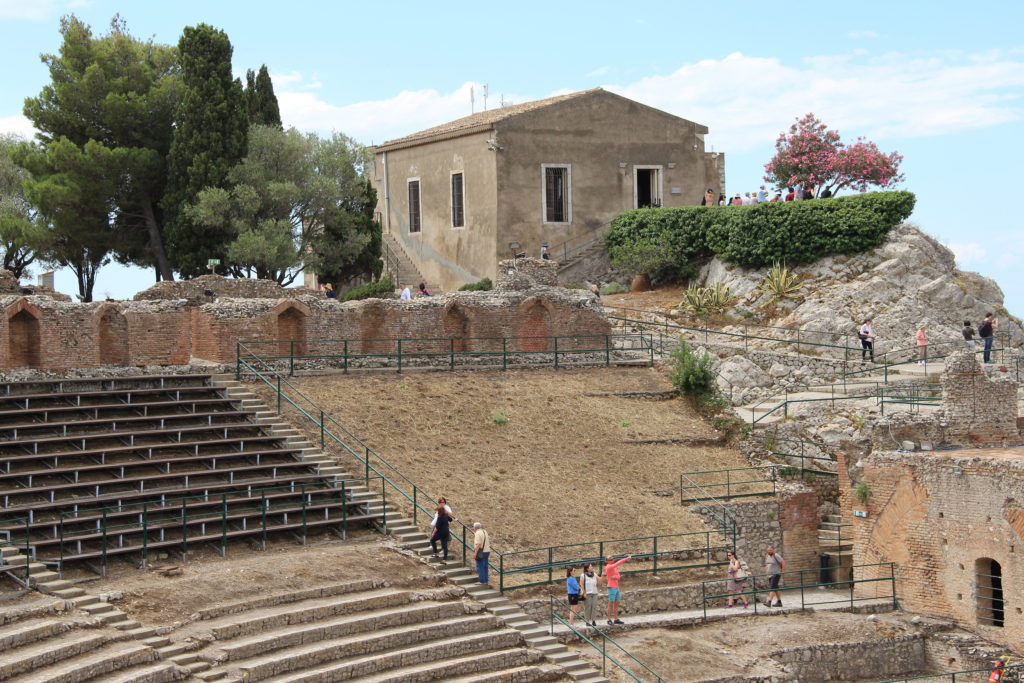

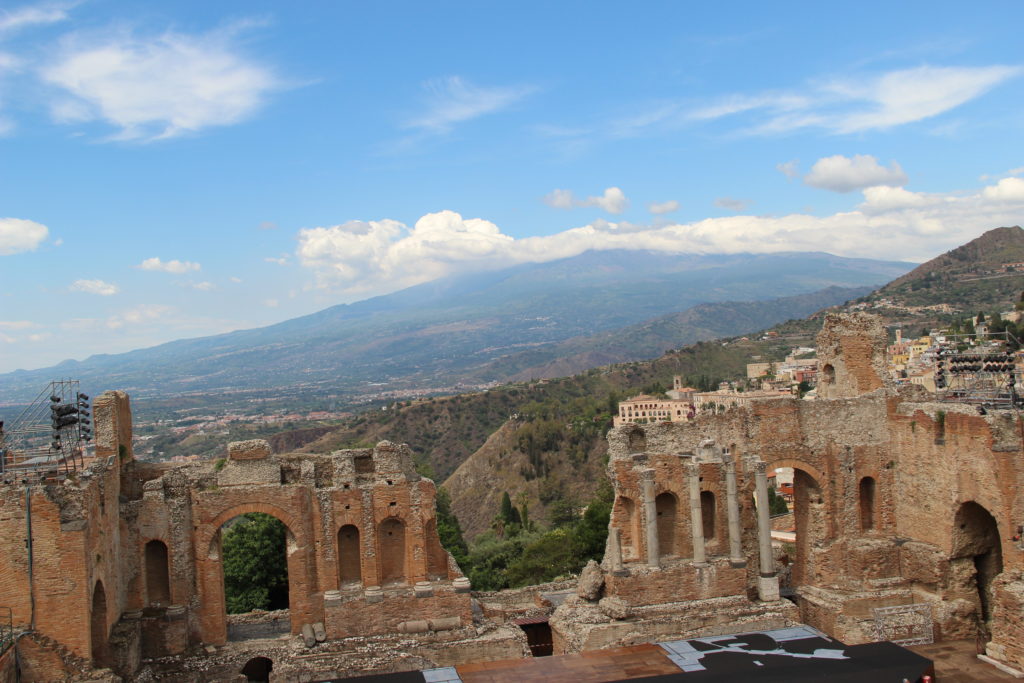
The Greeks often incorporated nature into their architecture. Looking at the view from the theater, this is very easy to believe. There are incredible views of Ionian Sea, Taormina and on a clear day, Mt. Etna. We were also able to see our ship while enjoying the wonderful views.

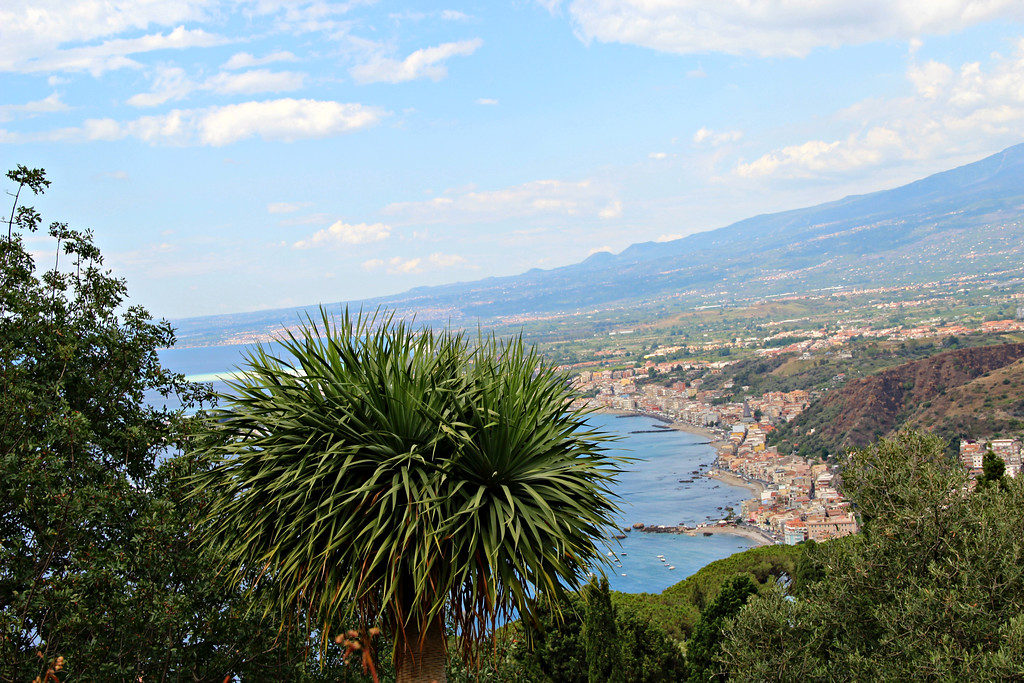


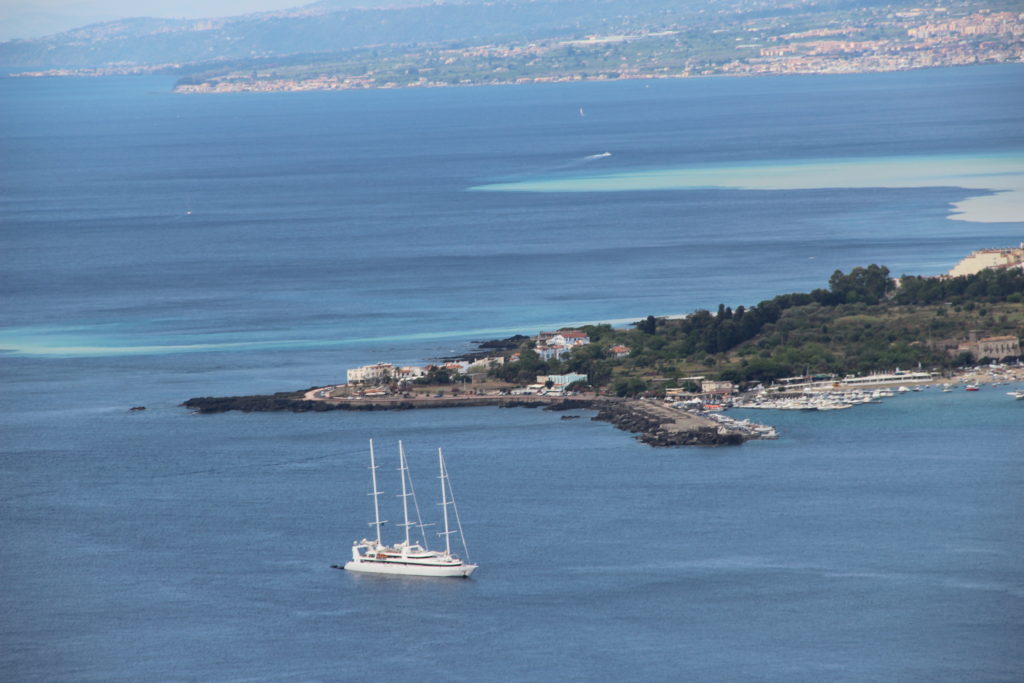
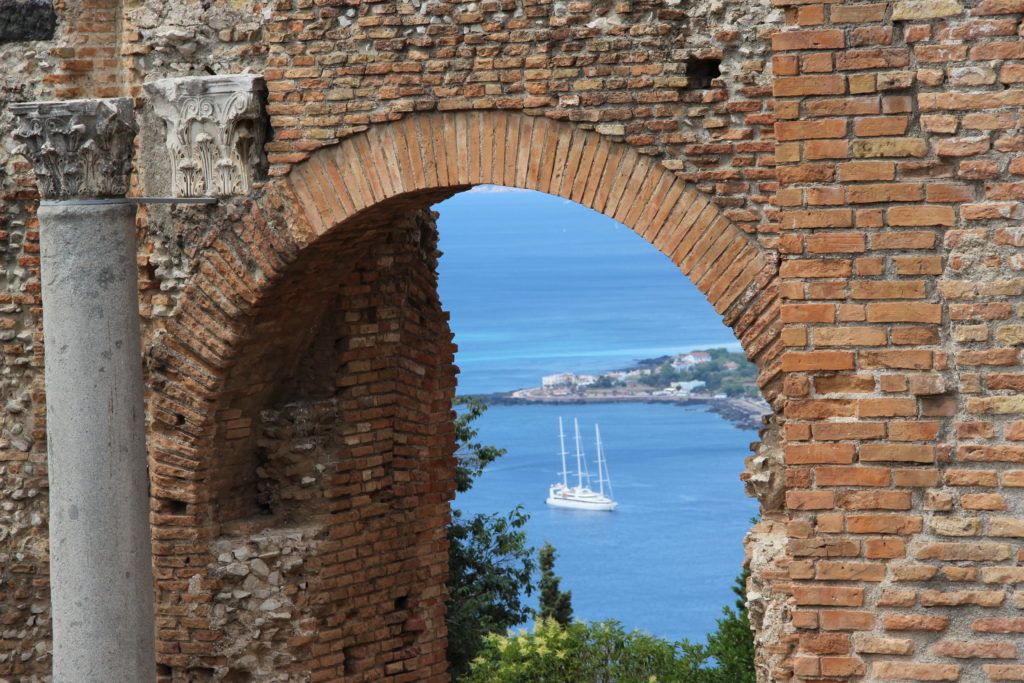
We also had time to walk around Taormina. There were inviting streets, beautiful balconies and small shops selling flowers, food and souvenirs. Tato, our tour director took us to Roberto’s where we were treated to delicious cannoli. And we went to an overlook in the Piazza IX Aprile. The clouds had cleared just enough for us to get a view of Mt. Etna which is the last picture I have included. Some of our fellow travelers took the shore excursion to Mt. Etna – we heard wonderful stories about their day, but I will have to say we found Taormina charming and we thoroughly enjoyed our time here.

